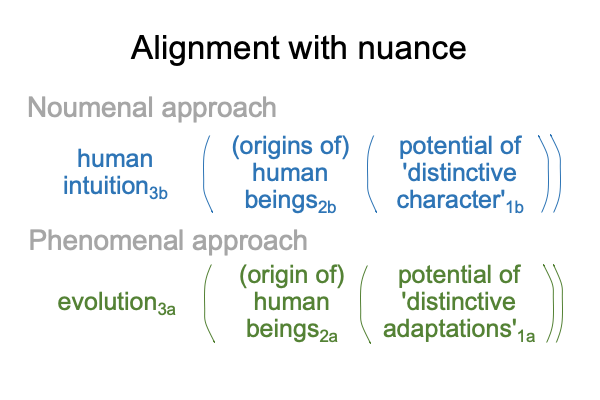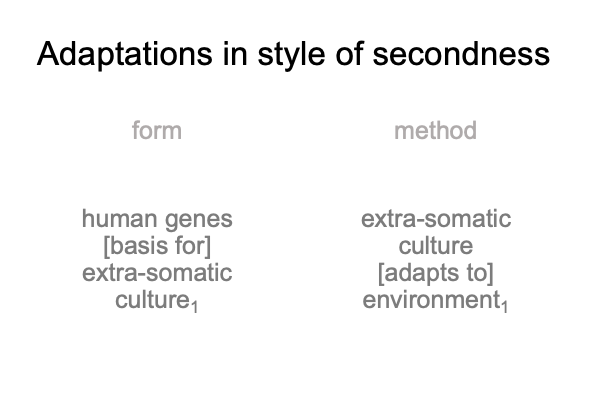0026 I now make a slight adjustment to the previous two-level interscope. I replace the content-level “character” with the scientific term, “adaptation.
Here is a diagram of the result.

0027 In the realm of possibility, ‘something distinctive’1b virtually situates ‘distinctive adaptations’1a.
I do not find a ‘distinctive something’1b in Turbon’s article.
Instead, I find a litany of ‘distinctive adaptations’1a.
0028 I examine section one, titled “The Essentials of the Evolution of Humankind”. The section opens with a question, asking, “How can the technological and scientific output of different modern peoples be explained?”
Surely, that is a historical question.
0029 What about the time before history?
What about earlier species in the Homo genus?
For 700,000 years, australopithecines and early Homo used Oldewan stone tools. Then, for 1,000,000 years, middle Homo erectus used Acheulean stone tools. Finally, around 500,000 years ago, late Homo heidelbergensis and later, Homo neadertalis used more sophisticated suites of stone tools, again for a very long time. Around 100,000 years ago, stone tools become very sophisticated and the Upper Paleolithic Revolution dawns. The Upper Paleolithic associates to anatomically modern humans.
0030 Ah, that sounds more like an essential. Stone tool use must be a distinctive adaptation1a.
Here is where Turbon introduces the two previously-noted dyads in the style of actuality.

0031 Stone tools belong to extra-somatic culture. Plus, stone tools are adaptive. Stone tools allow humans to do activities that they otherwise could not.
Changes in human genetics must have facilitated a mind and a body that are capable of manufacturing and using stone tools. However, the facilitation takes many, many generations, suggesting that stone tool use was one of many clever survival techniques practiced by Homo habilis, “handy man”, and other members of the Homo genus.
0032 So, I wonder, “Do all these clever survival techniques, these extra-somatic adaptations, have ‘something distinctive’ in common?”
